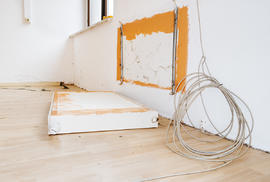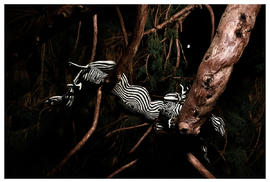- NMC/1985.3
- Item
- 2021
Wood Sprite, short film
Project Wood Sprite:
The short film Wood Sprite utilises video and stop-motion, as well as performing techniques from marionette to shadow puppetry and life-size, embodied puppets. The objects crafted for the project involve fabrication processes using wood, textiles, and paper. All processes were realised and connected through a holistic approach by the artist herself.
In the form of a tale, Wood Sprite depicts the origin journey of a wooden puppet to the forest. The sentient woods absorb this being into the night, allowing her and the puppeteer, in a mirroring game, into a realm of dissolution of all forms, matter and spirit. This film honours the union of nature and culture, and the porosity attuning human and more-than-human creatures, at a time where the stillness of the theatre stage forces us to enquire outwards – or, truly, inwards.
Fabrication, Puppeteering & Filmmaking | Ella Josephine Campbell.
Pine Sprite Performance and Dance | Solene Schnuriger & Ella Josephine
Campbell.
Music | ‘ I’ll Read You a Story ’ by Colleen, Written by Cecile Schot (SACEM), Used Courtesy of Cecile Schot.
Campbell, Ella Josephine







